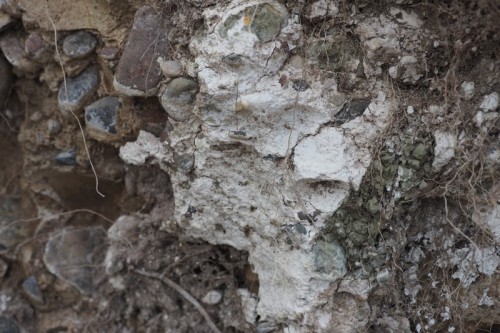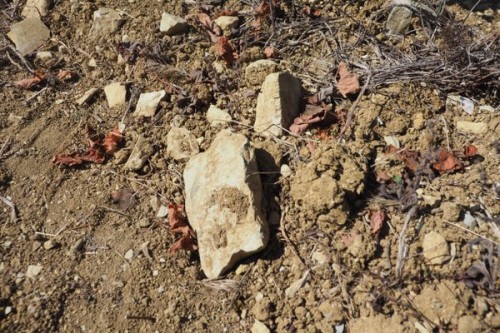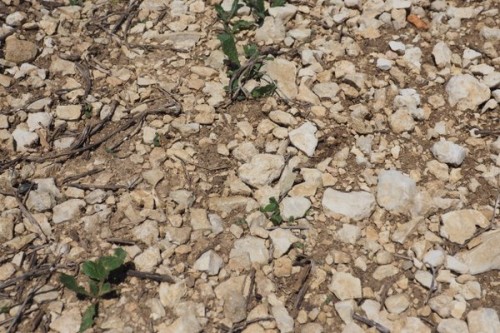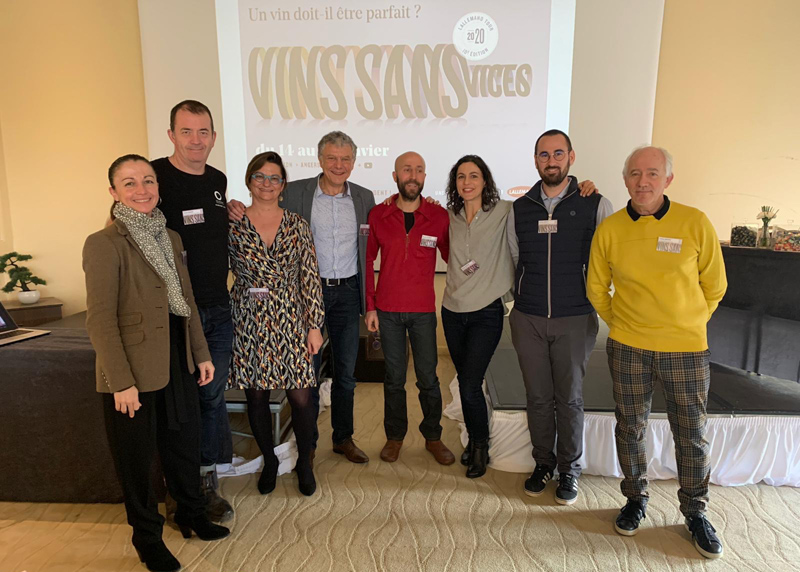
I’ve been embroiled in endless discussions about terroir in the past. And I mean endless. They quickly become unfocused, ideological and circular, with people talking at cross purposes. But it’s still such an interesting concept. And an important one: it lies at the heart of fine wine.
Here I just want to make one point. When it comes to fine wine, soils trump climate. Let me explain.
Terroir deniers (and there are many of them; they tend to hunt in packs; and Australia and California harbor the largest populations of them) suggest that the biggest factor in wine quality is climate. And, given the right climate and variety combination, then a skilled viticulturist combined with good winemaking can fashion great wines.
This spawned a lot of work looking at ‘homoclimes’. For example, if you want to make great Pinot Noir, then find the climatic areas that most closely resemble areas where the world’s greatest Pinots are made. That would probably be the Côte d’Or of Burgundy then. When I was getting into wine back in the mid-1990s this was how people were thinking. Some still do think like this.

But while climate clearly is important, it isn’t sufficient in of itself to create great wines. Although this offends my egalitarian principles, I must acknowledge that not all vineyard sites are created equal. And it’s what lies under the surface of the vineyard that acts as the ceiling to wine grape, and thus wine, quality.
To the terroir sceptic, trained in the self-confident wine schools of new world countries, the parcellation and vineyard hierarchies in Burgundy are absurd. Their explanation for this? They are all about marketing and microclimate. But there are two problems with this view.
First, microclimate: while there are going to be differences from one vineyard to the next, these climate differences don’t track the boundaries of climats (separately identified vineyard parcels: there are 1247 of them in Burgundy), and they are modest. A vine doesn’t see climate: it sees the weather of the growing season. This will differ from year to year more than the small microclimatic differences among the climats. The thing that stays the same is the soil (and the aspect, of course). There has been climate change with a warming trend over the last 50 years but there’s no clamour to change vineyard boundaries here.
And the marketing argument doesn’t stack up. Don’t you think, given the huge economic incentives, owners of village level vineyards would be taking much more care and attention, if by better viticulture they could achieve Grand Cru level wines? Of course, there are some over-performers with village level plots (think JP Fichet in Meursault as a good example), and some under-performers with Grand Crus (and some Grand Crus, such as bits of Clos du Vougeot and Echezeaux that aren’t necessarily all that grand), but in general the vineyard hierarchy is intact. This is because it is the soils that act as the ceiling for quality. Good growers run into this ceiling. I’m not negating the importance of skilled viticulture and winemaking; I’m just saying that this can only take you so far.

If you don’t have great soils, you can’t make great wine. You can make very good wine, and very enjoyable wine, but there will be a ceiling to quality no matter how skilful your viticulture and winemaking is. For this reason, for fine wines, soil trumps climate. The climate can get you most of the way there, but to cross the finishing line, you need some help from the soils.
You can make some very nice wines indeed from grapevines planted in OK soils with the right climate. But there’s a difference between good and great. Not everyone gets this difference, but it is there, and as a community of judgement we recognize and reward it. And to make great wines, you need to have a great soil. How to define a great soil? That’s a great topic for another day, but water relations, composition and chemistry all matter. Microbes, too, probably. Across the wine world, people are beginning to realize this.



“Climate can get you most of the way there….”
If you accept that the best Bordeaux left bank wines fall into your “great” category, then it’s man-made drainage that made them great as before drainage they weren’t so great. It’s a soil’s ability to drain at the right time and retain water at the right time that makes the difference.
Stephen, your point actually strengthens Jamie’s position. The soil’s drainage ability is part of “the soil” not of “the climate”.
I had thought of offering that exact example to show beyond any doubt that Jamie was right. It is would be so easy to “make” more Premier Cru vines, how come do they let all that ground in Ch Margaux (just to give an obvious example) to rest with grass on. Surely the climate is the equal to the other square meter just ahead.
But another discussion that goes through the terroir issue is about the human factor: do people belong to the terroir notion? In my mind, it’s clear that terroir must include people, for the simple reason that without people you don’t have vineyards, you don’t have wine, you just have a wild bindweed yielding a strange group of berries you would never eat or ferment.
Terroir is all that, not only soil, not only climate, not only people, not only history, it’s all of that.
cheers
Luis
If this is an article about which is “more” important, soil or climate, then there is no argument. Of course climate is more important. Let us experiment: you take enough of the “best soil in the world” to a place say outside of Chicago and grow some Cabernet Sauvignon, I will take any place with virtually any “soil” in Napa, Sonoma or even here in Southern Oregon and I bet my grapes make better wine. Sure I agree to make a great wine all the components must all be of the highest order. Your argument, “You can make very good wine, and very enjoyable wine, but there will be a ceiling to quality no matter how skilful your viticulture and winemaking is. For this reason, for fine wines, soil trumps climate” doesn’t simply apply to soil but any component that is “missing.” One can say that if the vine has everything but water then clearly water is what is preventing it from producing great grapes. All things being equal (which, of course, they rarely are) soil is a critical part of the equation but climate is still more important.
But will climate undo soils, over time? If there’s sufficient changes in all the various elements sunlight and temperature bring to the table, will that be enough to upset the equilibrium? Then the tables turn.
But Jamie’s statement “If you don’t have great soils, you can’t make great wine” should read “If you don’t have great DRAINED soils, you can’t make great wine”
Bordeaux is pretty flat so drainage helps, whether by dint of soils with good natural drainage or by dint of inserted drainage. Where slopes, the drainage component has been put in place over time. To whit, soil in itself is not the obvious starting point. The effects of climate and exposure mark a wine more than the soil. Try making exceptional wine in ‘great’ soils where the sun doesn’t shine. Why do vintages differ from year to year? Why should this still a matter of debate?
To have a site with potential for greatness it still needs to be realised. While that may be straight forward in Europe where there is history that has “demonstrated” the greatness, in the New World that potential has to be first found and then realised. That is when the “human” factor comes into play.
It is one thing to find a site that has the potential for producing a unique wine, it then takes someONE to choose the appropriate variety, clones, rootstocks, row spacing and trellis configuration. This is the “human” factor in terroir.
Potential is one thing, it takes SOMEONE to realise it.
Then to get it to the world and pay for the investment, it takes marketing.
Soil is important indeed. I am not disputing the role of climate either. Both make up the terroir concept of a wine. I just want to point out the alarming issues that the original composition of soils is being altered with contamination of chemicals (used in vineyards as well as in other crop farming nearby) whether these are products made by the likes of Monsanto or they are permissible ‘bio products’ such as copper and sulfur. And these products are needed to combat diseases that develop from changes in climate. Ref. Recent studies of chemical residues in Bordeaux and to a lesser extent also in Bourgogne.
As a Paso Robles winegrower of fifteen-plus years, I have seen the good years when there was sufficient rain from the sky and the not-so-good years when we had to rely on groundwater irrigation. Better yields of better quality followed the rain years. Soil composition was relatively stable across years and regular composting helped the all-important drainage aspect. The vines definitely preferred the rainwater over groundwater. Given great soil as the starting point, water, in my estimation, is only slightly less important than the soil. You will still get a crop with groundwater. It probably won’t be as high a yield or as good off-the-vine quality as with rainwater, leaving the winemaker with bigger challenges to hit a home run. Climate, therefore, does not trump terroir, rether climate depends on great terroir to create the great grapes that, with great wnemaking, can create the great wines.
I often wonder about the incessant need to quality one factor over the other. Producer over vintage….. Soil over climate…. as if ONE factor operates independently of the other. Take one away and the other will produce average to below average wines. My humble take is that they BOTH are equally important. End of story.
It’s more than just drainage. There’s more to good vineyard soil than just water relations!
Your argument is valid if this is an article about which is more important. It isn’t though.
Yes, but the fact that it is human intervention that has affected the soil, doesn’t change the fact that it is the soil that is important.
Dirty business really.
Another opinion piece without any supporting facts. How does this forward any reasonable discussion?
The statement was that soil is more important than climate, but there are no supporting facts Jamie. I think Mark made a good argument above as to why climate is much more important.
I’m late arrived to the debate. I grow wine. I have the ability to change my soil. I have. I modify my climate. We are in a desert we irrigate.( ground water sucks, it’s not sustainable, we get to use snow melt surface water, plants still prefer rain!) I could grow under high tunnels, I could use sun screen nets. My trellis is a terrific modifier.
The continued use of the term terroir is almost always inappropriate. Microclimate is not relevant unless you produce wine from single vines.
Mesoclimate is the word we should be discussing. It includes the farmer. The farmer is the
Soil is a great marketing tool.
Where is the data to support any soil type?
Paul Vandenberg
Paradisos del Sol
Terroir was a term the Cistercian monks used to explain those tiny parcels of the Côte d’Or of Burgundy. All farmed by the monks, using the same cultivars and methods but producing unique wines. Explained by the manifold variations in soil structure, aspect, and other aspects of geography. The farmer was a constant.
To use terroir as an explanation for variations in wine character between regions is a misuse of the concept.
Microclimate is the biotic and a biotic factors affecting one organism. Only appropriate if one makes single vine wines.
Mesoclimate is a limited, defined population. Part of a vineyard, a vineyard, an AVA.
Both consider the farmer as a key part.
how to choose a good wine?
I firmly believe Jamie is right, have you ever tasted series of wines from one producer from one vintage and different terroirs? And from the same producer these wines from different vintages? You will notice every wine is different and quality differs (what is quality? perceived quality, objective quality?) per wine, but in the end those wines from the best terroirs will provide the best quality in certain (best) vintages, quality that is clearly above the other wines, even in vintages that yielded the best quality for those wines from “lesser” terroirs. That is the ceiling Jamie is writing about, the other wines attain their summit in certain years but the wines from the best terroirs exceed this level (not in every vintage, but generally they do).
I am afraid extensive and serious tasting of countless wines is the only way to get the picture Jamie paints. Being a wine taster has its advantages.